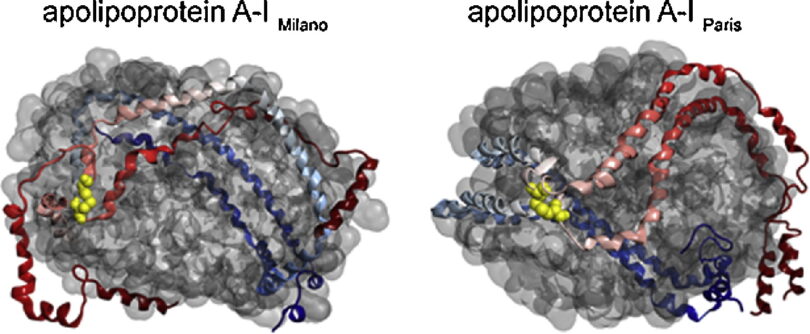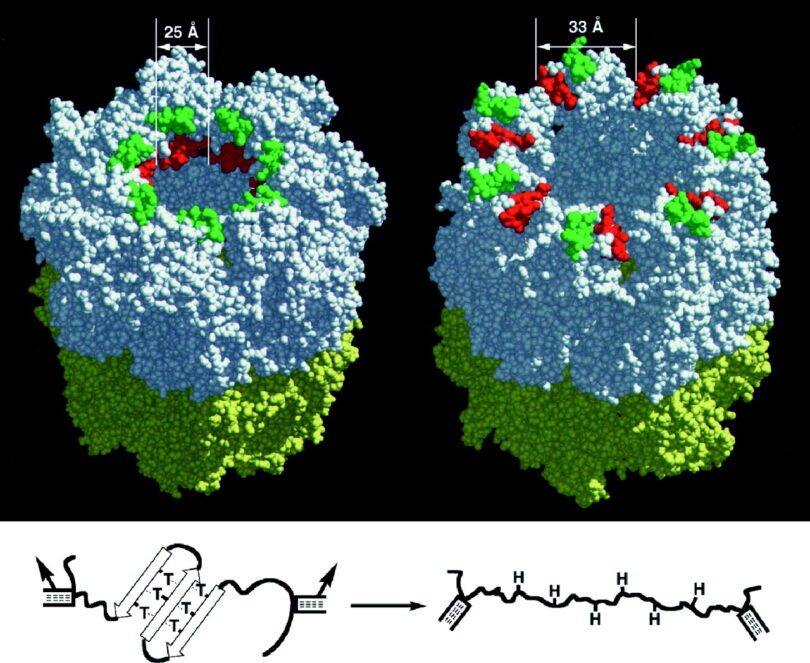“The good cholesterol or Milano A-1 mutation”

The Good: This mutation reduces the risk of arteriosclerosis by increasing good cholesterol levels. Thus, providing carriers with up to an 88% lower risk of developing arteriosclerosis and other adverse effects due to high cholesterol, such as the incidence of heart attack and stroke. This mutation has been identified as having originated and is prevalent in Italy. -1
The reality: While the mutation does provide a benefit of reducing “bad” HDL cholesterol to some trait carriers, the mutation resulted in damage to the gene that controls
(among likely many other things yet to be understood) the regulation of enzymes secreted in the intestines and the liver. How the mutation exactly affects HDL levels is yet not fully understood.-2 The mutation is directly associated with increased renal (kidney) dysfunction. Additional negative clinical manifestations have been identified within the liver, heart, skin, and larynx. The mutation has been associated with neuropathic disorders.-2 Sequencing the coding region revealed a C → T substitution…(which) resulted in a premature (damaged) stop codon-3. “The combination of (a) marked familial decrease of HDL-cholesterol and apo-A-I, (b) hypertriglyceridemia {an abnormal concentration of triglycerides in the blood} (that is resistant to diet and drug treatments), (c) {plus} changes of the HDL composition and apoprotein pattern, (d) normal LPL and LCAT activities, and (e) the absence both of a significant increase of atherosclerotic vascular disease in the family and of cholesterol accumulation in tissues strongly suggests that this is a new disease entity in the field of lipoprotein pathology.”-4. At least 700 inherited metabolic disorders are associated with genetic loss specific to liver function related to this mutated gene.-5
Significant hypertriglyceridemia with a very marked decrease of high density lipoproteins (HDL)-cholesterol levels (7-14 mg/dl) was detected in three members (father, son, and daughter) of an Italian family. The three affected individuals did not show any clinical signs of atherosclerosis (which is “good”, however)…the subjects showed a significant enlargement of the lipoprotein particles and a concomitant increase in the triglyceride content…The observation in otherwise clinically healthy subjects of hypertriglyceridemia, reduced HDL-cholesterol, and marked apoprotein abnormalities, without a significant incidence of atherosclerotic disease in the family suggests this is a new disease entity in the field of lipoprotein pathology, very probably related to an altered amino acid composition of the apo-A-I protein-4
(see Weisgraber et al. 1980. J. Clin. Invest. 66: 901-907).
Mutations in the APOA1 gene have also been linked to familial hypoalphalipoproteinemia (low levels of high-density lipoprotein cholesterol (HDL-C)). Patients carrying (a single) APOA1 mutation typically demonstrate reduced levels of high-density lipoprotein (HDL) cholesterol …(but) the presence of (two) APOA1 mutations generally results in complete absence of HDL cholesterol and may include additional clinical features such as xanthomas (a skin condition in which certain fats build up under the surface of the skin) or corneal opacities (scaring of the cornea).
Mayo Clinic Labs-2
The hereditary…late-onset diseases that show variable penetrance due to amyloidosis (due to the protein misfolding caused by the APOA1 mutation)…present as non-neuropathic systemic amyloidosis (organ dysfunction), with renal (kidney) dysfunction being the most prevalent manifestation.
Mayo Clinic Labs-2
Defects in this (APOA1) gene are associated with HDL deficiencies, including Tangier disease…
https://www.ncbi.nlm.nih.gov/gene/335
Summary: While the genetic mutation to APOA1 does render the benefit of lowered HDL cholesterol which also reduces the risks associated with arteriosclerosis, there are apparent degradative side effects directly related to this mutation. There was not any novel (new) de novo genetic material created. It was a “benefit” derived directly from degradation. While high HDL cholesterol levels are “bad,” having very little (or no) HDL is as bad or perhaps worse. The combinations of the factors associated with the study of this mutation have rendered researchers to conclude that this mutation effectively “forms a new disease entity in the field of lipoprotein pathology)-2. This is not surprising to genetics in the least because mutations cause countless genetic disorders, illnesses, cancers, disabilities like Autism, or deformities. Mutations are much more associated with pathologies than with any supposed beneficial causality. The function of biological systems does not exist “in a bubble” as a single isolated trait, but they cascade throughout many systems that impact-related and unrelated processes.
1- Clinical: Apolipoprotein A-I (APOA1) Gene, Full Gene Analysis, Varies
2-https://www.ncbi.nlm.nih.gov/pmc/articles/PMC2694339/
3- https://www.science.org/doi/10.1126/science.323.5914.583b
5- Pampols T. Inherited metabolic rare disease. Adv. Exp. Med. Biol. 2010;686:397–431. [PubMed] [Google Scholar]


